Art History Timeline Paleolithic Art What Is Paleolithic Art
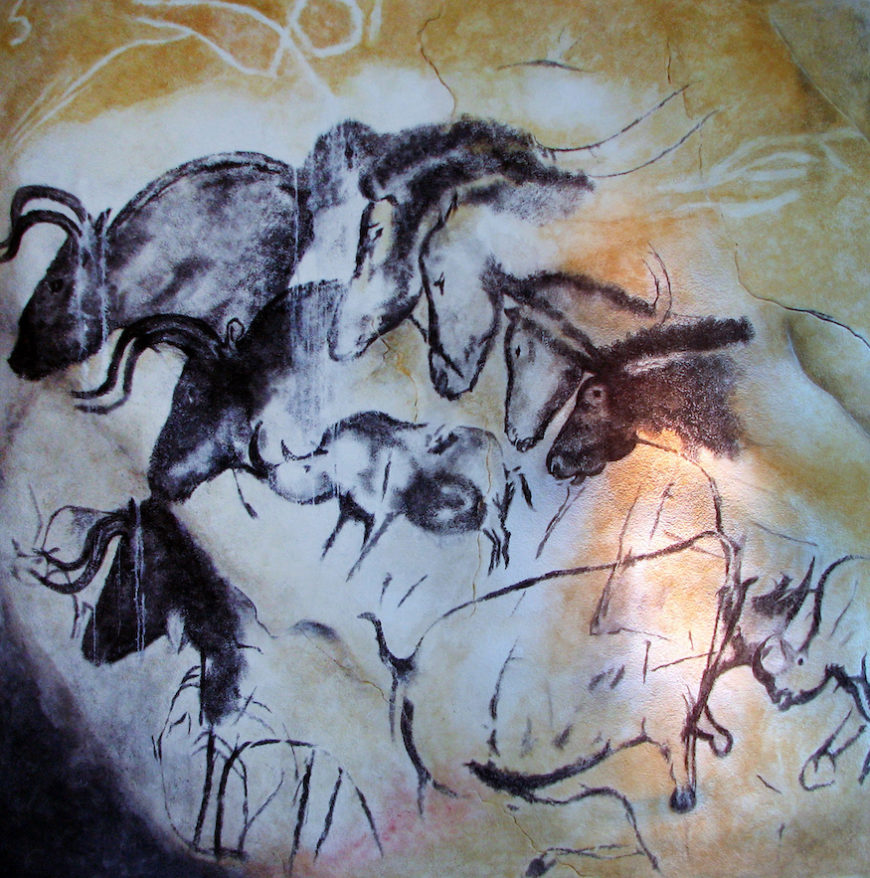
Replica of the painting from the Chauvet-Pont-d'Arc Cave in southern French republic (Anthropos museum, Brno)
The oldest art: ornamentation
Humans (Homo sapiens) make art. Nosotros practice this for many reasons and with whatever technologies are available to us. Recent research suggests that Neanderthals as well made fine art.
Extremely old, non-representational decoration has been constitute beyond Africa. The oldest firmly-dated example is a drove of 82,000 year old Nassarius snail shells constitute in Morocco that are pierced and covered with ruby ochre. Wear patterns propose that they may have been strung chaplet. Nassarius trounce beads found in Israel may be more 100,000 years onetime and in the Blombos cavern in Southward Africa, pierced shells and minor pieces of ochre (cherry Hematite) etched with simple geometric patterns take been found in a 75,000-twelvemonth-old layer of sediment.
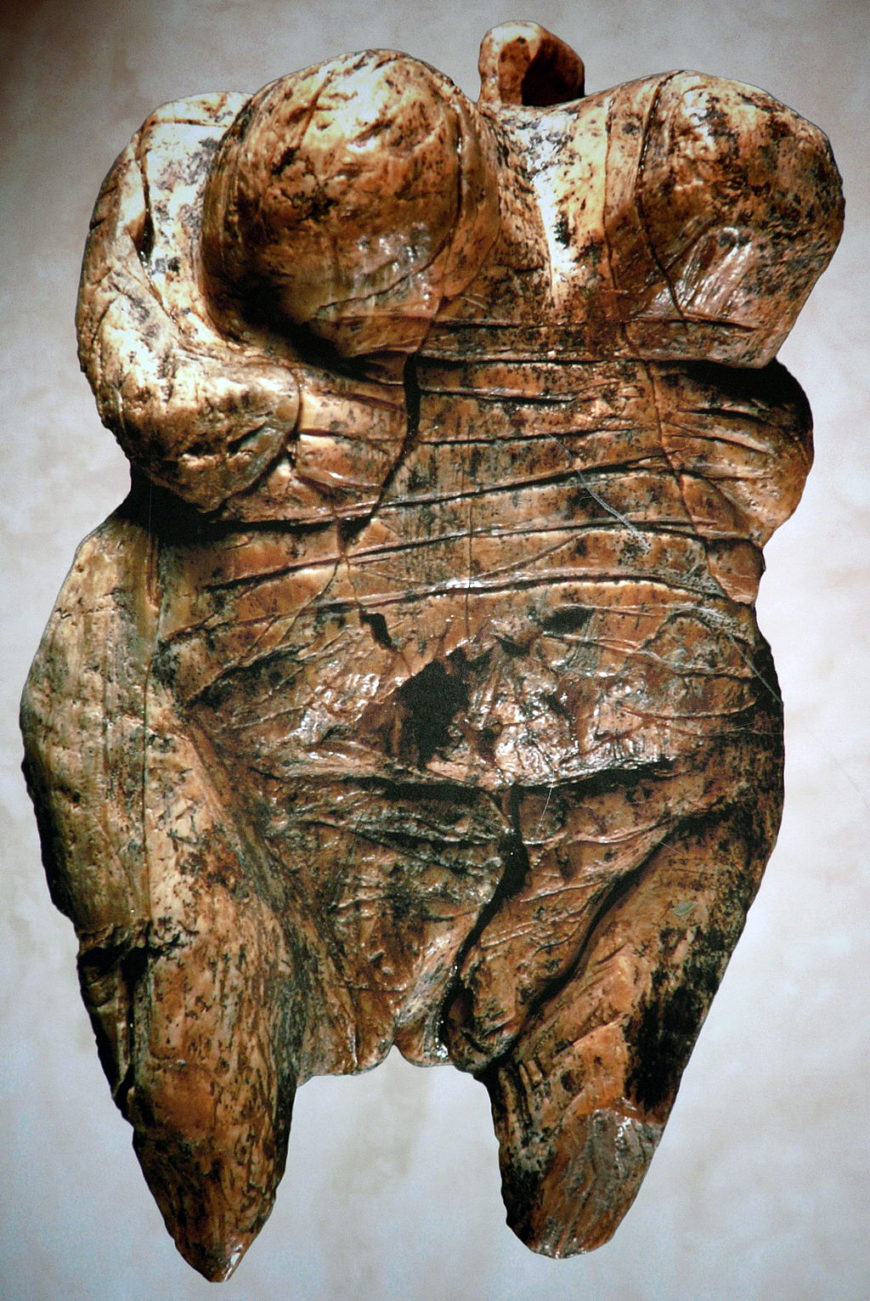
Female Figure of Hohlefels, c. 35,000 B.C.E., ivory, institute in cave almost Schelklinge, southern Frg (photo: Ramessos, CC BY-SA iii.0)
The oldest representational fine art
Some of the oldest known representational imagery comes from the Aurignacian culture of the Upper Paleolithic period (Paleolithic means onetime stone age). Archaeological discoveries across a broad swath of Europe (specially Southern France, Northern Espana, and Swabia, in Germany) include over 2 hundred caves with spectacular Aurignacian paintings, drawings, and sculpture that are among the earliest undisputed examples of representational image-making. Amongst the oldest of these is a 2.iv-inch tall female figure carved out of mammoth ivory that was found in six fragments in the Hohle Fels cavern most Schelklingen in southern Germany. It dates to 35,000 B.C.E.
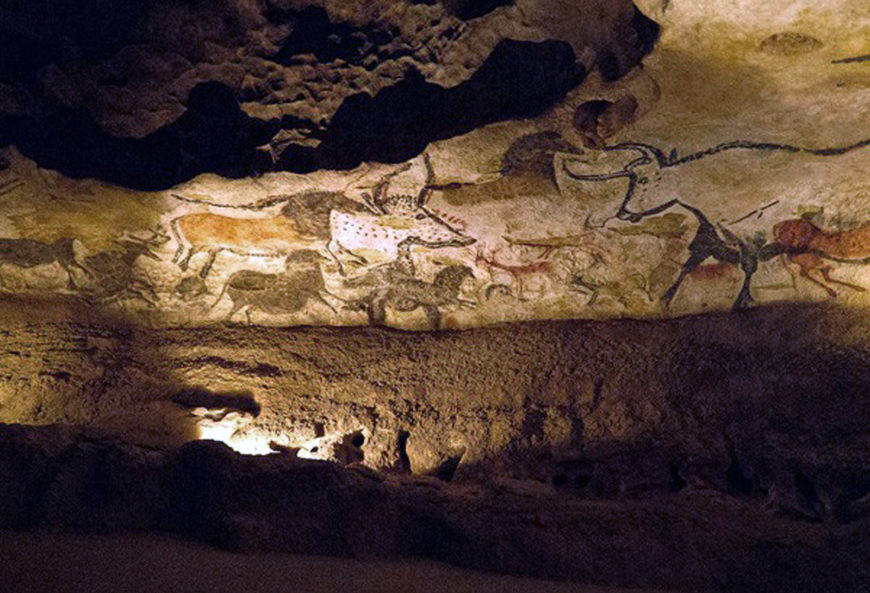
Left wall of the Hall of Bulls, Lascaux Two (replica of the original cave, which is closed to the public), original cave: c. 16,000–14,000 B.C.East., 11 anxiety 6 inches long
The caves
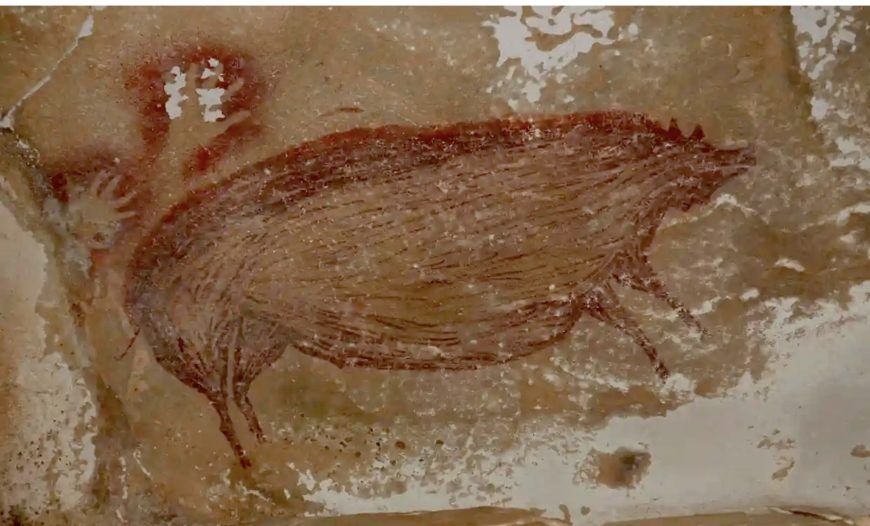
Warty sus scrofa (Sus celebensis), c. 43,900 B.C.E., painted with ocher (clay paint), Maros-Pangkep caves, Leang Bulu' Sipong 4, Southward Sulawesi, Republic of indonesia
The caves at Chauvet-Pont-d'Arc, Lascaux, Pech Merle, and Altamira incorporate the best known examples of pre-historic painting and drawing. Here are remarkably evocative renderings of animals and some humans that employ a complex mix of naturalism and brainchild. Archaeologists that written report Paleolithic era humans, believe that the paintings discovered in 1994, in the cavern at Chauvet-Pont-d'Arc in the Ardéche valley in French republic, are more than than 30,000 years onetime. The images plant at Lascaux and Altamira are more recent, dating to approximately 15,000 B.C.E. The paintings at Pech Merle appointment to both 25,000 and 15,000 B.C.E. The world's oldest known cavern painting was found in Sulawesi, Indonesia in 2022 and was made at to the lowest degree 45,500 years agone.
Questions
What can we really know almost the creators of these paintings and what the images originally meant? These are questions that are difficult plenty when nosotros study fine art fabricated only 500 years ago. It is much more than perilous to affirm meaning for the art of people who shared our beefcake merely had non notwithstanding developed the cultures or linguistic structures that shaped who we have become. Practice the tools of art history fifty-fifty employ? Here is prove of a visual language that collapses the more than 1,000 generations that dissever us, but we must be cautious. This is particularly and so if we want to understand the people that made this art as a way to sympathise ourselves. The desire to speculate based on what we see and the physical evidence of the caves is wildly seductive.
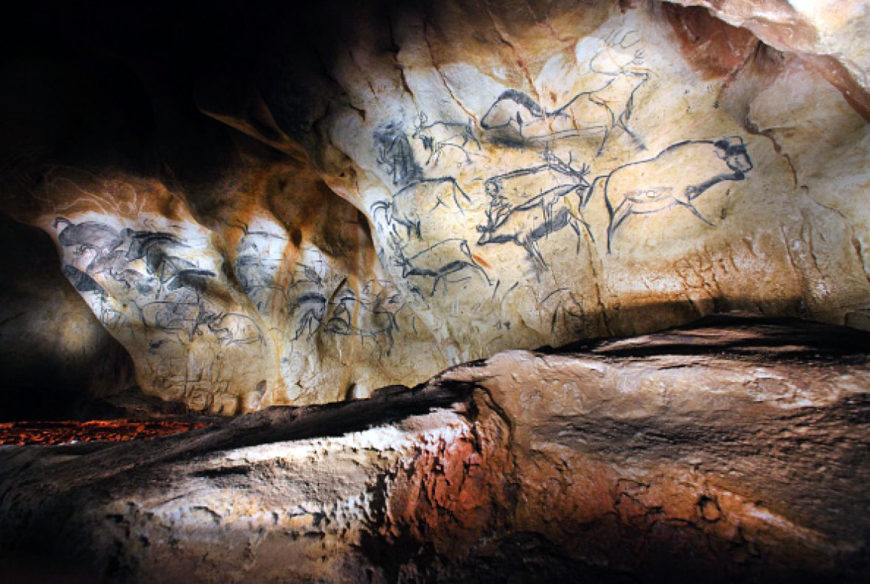
Replica of the painting from the Chauvet-Pont-d'Arc Cave in southern France
Chauvet-Pont-d'Arc
The cave at Chauvet-Pont-d'Arc is over 1,000 anxiety in length with two large chambers. Carbon samples date the charcoal used to depict the two head-to-caput Rhinoceroses (meet the prototype higher up, lesser right) to between 30,340 and 32,410 years earlier 1995 when the samples were taken. The cave's drawings depict other big animals including horses, mammoths, musk ox, ibex, reindeer, aurochs, megaceros deer, panther, and owl (scholars annotation that these animals were not then a normal role of people'southward diet). Photographs show that the drawing at the top of this essay is very advisedly rendered but may be misleading. We encounter a grouping of horses, rhinos, and bison and we see them as a group, overlapping and skewed in scale. But the photo distorts the way these animal figures would have been originally seen. The bright electrical lights used by the photographer create a broad flat scope of vision; how dissimilar to see each animal emerge from the dark nether the flickering low-cal bandage by a flame.
A discussion of caution
In a 2009 presentation at University of California San Diego, Dr. Randell White, Professor of Anthropology at New York University, suggested that the overlapping horses pictured above might represent the same horse over time, running, eating, sleeping, etc. Perhaps these are far more than sophisticated representations than we take imagined. There is another drawing at Chauvet-Pont-d'Arc that cautions the states against prepare assumptions. It has been interpreted as depicting the thighs and genitals of a woman but there is also a drawing of a bison and a lion, and the images are well-nigh intertwined. In add-on to the drawings, the cavern is littered with the skulls and bones of cavern bear and the track of a wolf. In that location is also a footprint thought to accept been made past an eight-year-sometime boy.
Additional resources:
Is this cave painting humanity's oldest story?
In our time: cave art
U-Th dating of carbonate crusts reveals Neandertal origin of Iberian cave art
Neanderthal artists made oldest-known cave paintings
Earth's oldest known cave painting constitute in Indonesia
Sus scrofa Painting May Be World's Oldest Cave Art Yet, Archaeologists Say
The cave of Chauvet-Pont-d'Arc
A carved female person figurine dating to at to the lowest degree 35,000 years ago recovered from caves in the Hohle Fels region of Federal republic of germany (video)
Lascaux: a visit to the cavern
Lascaux on The Metropolitan Museum of Fine art's Heilbrunn Timeline of Fine art History
For instructors: related lesson plan on Art History Pedagogy Resources
Smarthistory images for teaching and learning:
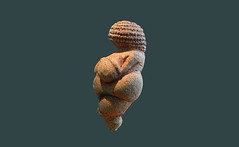


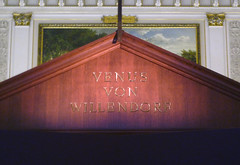
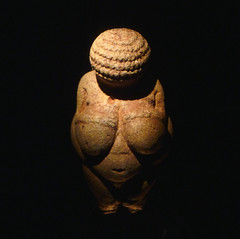
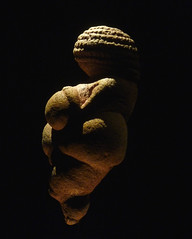
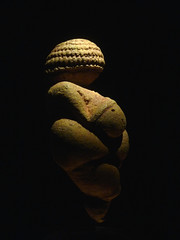
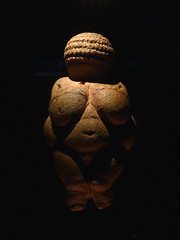

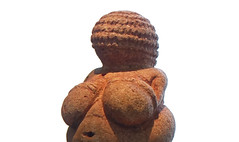
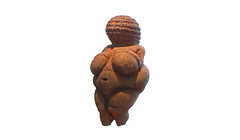
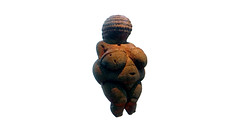
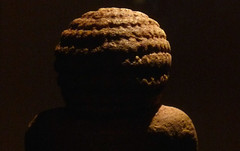
More Smarthistory images…
foglemannorgarehe.blogspot.com
Source: https://smarthistory.org/paleolithic-art-an-introduction/
0 Response to "Art History Timeline Paleolithic Art What Is Paleolithic Art"
Postar um comentário